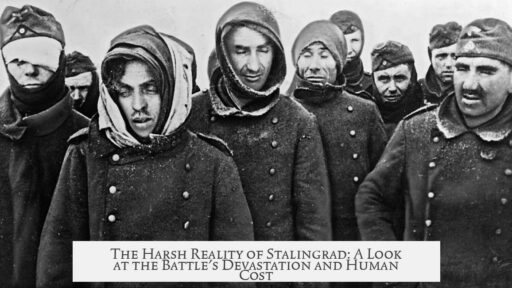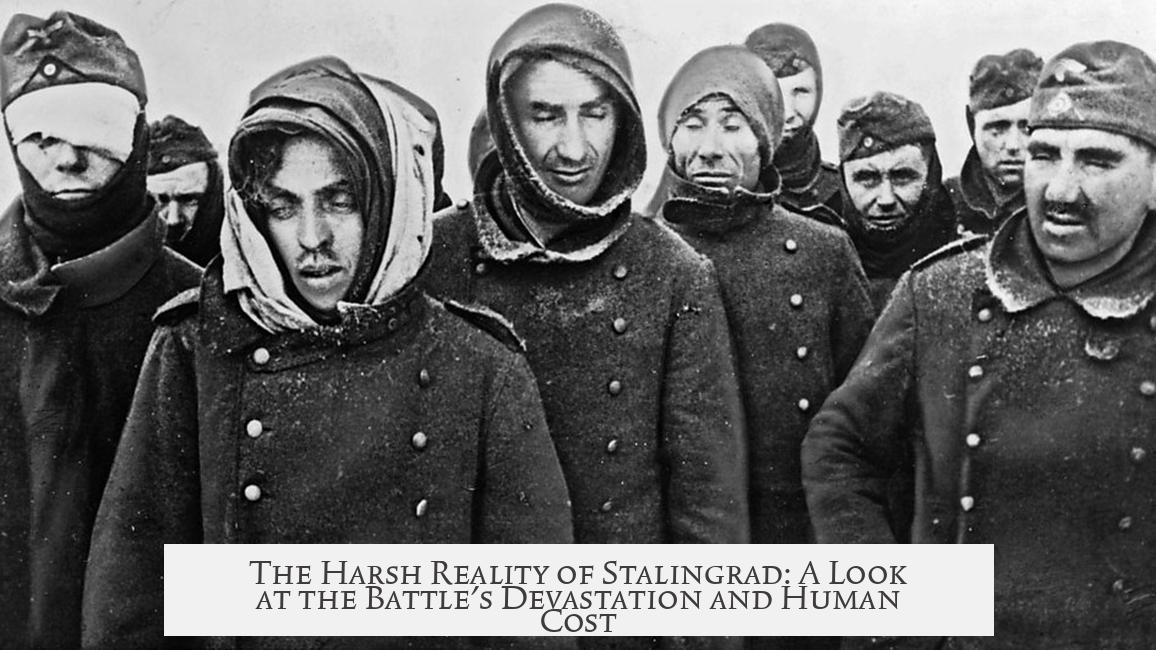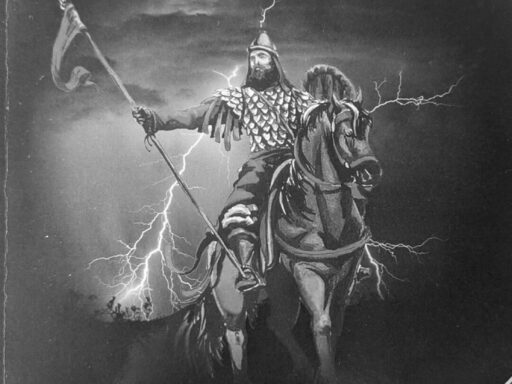The Battle of Stalingrad stands as one of the most brutal and devastating confrontations in military history. Over roughly 200 days, between 1 and 3 million people died. This number translates to an average daily death toll ranging from 5,000 to 15,000. This staggering scale of loss exceeds casualties from battles like the Somme by two to six times, though Stalingrad unfolded over months rather than days.
The brutality of Stalingrad emerges from the intense urban warfare, the harsh environmental conditions, and the brutal treatment of combatants and civilians alike.
The city itself was transformed into ruins. Wrecked boats and corpses clogged the Volga River. The destroyed cityscape recalls imagery similar to Hiroshima and Nagasaki post-atomic bombings. Entire German divisions, each numbering nearly 10,000 men, were decimated down to merely dozens of survivors. Across the battlefield, bodies piled in such numbers that they were sometimes used as makeshift cover from enemy fire.
Close-quarters combat dominated the battle. At night, Soviet troops searched for German soldiers in small groups, wielding hand weapons to maintain stealth. Soviet snipers, many of whom lacked formal training but possessed hunting experience, targeted German officers with precision. Their tactics aimed to disrupt German command structures, leaving many units leaderless amid chaotic combat.
German forces suffered extreme deprivation. Their supply lines were overstretched, leading to shortages of food, medical supplies, and winter clothing. Communicable diseases like typhus, diphtheria, and dysentery spread rapidly. Cases of frostbite, hypothermia, and gangrene were common among soldiers. Some reports note desperate acts of cannibalism or attempts hindered by frozen corpses. Amidst starvation and cold, German troops resorted to wearing gloves fashioned from animal skins, often from rats or stray dogs. The psychological toll led to mass suicides and internal riots sparked by rumors of hidden supplies.
Drug use also played a role; many German soldiers took Pervitin (methamphetamine) to endure the grueling conditions or suffered withdrawal symptoms that impaired performance. Equipment failures and lack of fuel added to their misery, as the campaign’s original goal of seizing Baku oil fields became sidelined by the protracted urban battle.
Civilians in Stalingrad endured similar horrors. Although Stalin eventually authorized evacuations for young children and elderly women, many non-combatants remained. Civilians often served as combat support, including roles like ammunition runners. They learned survival skills under fire in what soldiers grimly referred to as the “Stalingrad Street Fighting Academy.” Teenage soldiers, such as the 1077th Anti-Aircraft Regiment composed of recently graduated girls, fought fiercely, often repurposing their weapons to repel German infantry. Despite their efforts, indiscriminate German bombing and street fighting led to countless civilian casualties, including children.
The fates of German prisoners of war were equally grim. Soviet forces captured nearly 100,000 soldiers, yet only about 6,000 survived captivity. Overcrowding, lack of food and clothing, wrecked transport infrastructure, and severe illnesses contributed to high mortality. The Soviet troops, civilians, and POWs alike faced resource scarcity, but POWs were often neglected in distribution priorities.
Stalingrad combined multiple forms of warfare—urban combat, siege warfare, and mechanized operations—into a continuous, unrelenting hell. The logistical collapse made medical treatment impossible. Neither soldiers nor civilians received any immunity from the violence. The convergence of starvation, freezing temperatures, disease, relentless fighting, and psychological strain created a battle environment of unparalleled cruelty.
| Aspect | Details |
|---|---|
| Duration | About 200 days (six months) |
| Casualties | 1 to 3 million dead; 5,000 to 15,000 daily deaths |
| Urban Destruction | City reduced to rubble, river clogged with wreckage and bodies |
| Combat Conditions | Close quarters; nighttime stealth operations; snipers targeting officers |
| German Conditions | Severe shortages, disease, frostbite, cannibalism, drug use, suicides |
| Civilian Role | Support combat roles, teenage combatants, heavy civilian casualties |
| POW Outcome | ~100,000 captured; ~6,000 survived due to neglect and poor conditions |
- Stalingrad was extraordinarily deadly with daily casualties far exceeding many famous battles.
- The urban environment intensified the fighting and destruction, leaving the city in ruins.
- German soldiers endured starvation, disease, harsh weather, and psychological stress, impacting their combat effectiveness.
- Civilians were actively engaged in support roles but suffered massively from bombing and street combat.
- German POWs faced neglect and high mortality due to severe resource shortages.
How Brutal Was Stalingrad? A Deep Dive Into One of History’s Bloodiest Battles
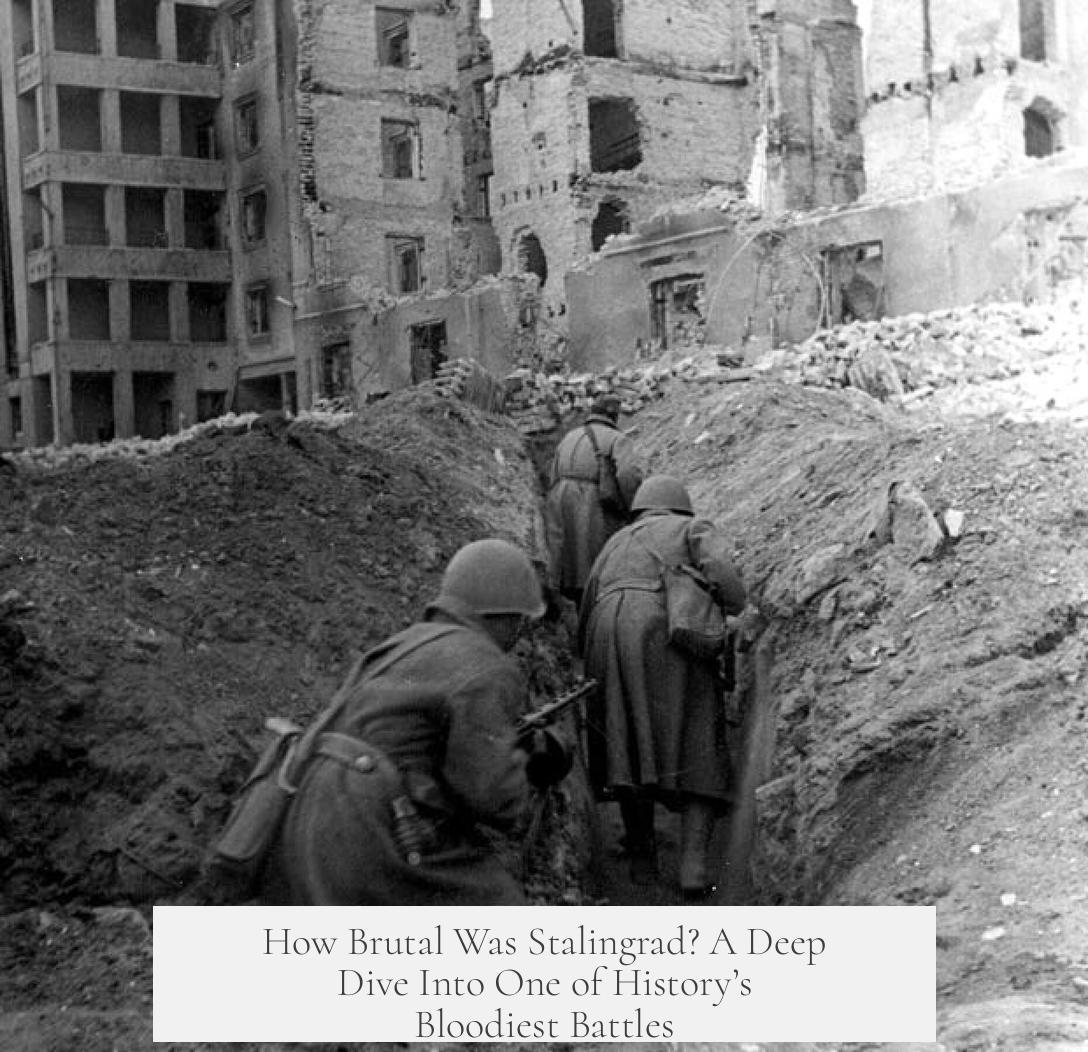
Just how brutal was Stalingrad? In one word: extreme. But that barely scratches the surface. The Battle of Stalingrad wasn’t just a clash of armies; it was a ruthless grind of survival, death, and devastation that shaped World War II’s trajectory. Over six months, the city endured relentless carnage and suffering on a scale hard to imagine today.
Between 1 million and 3 million people perished here during 200 days of relentless combat. That means, on average, 5,000 to 15,000 deaths per day—a staggering figure beyond most onlookers’ comprehension. To put this in perspective, the Somme, often remembered as one of the war’s bloodiest battles, claimed far fewer lives, even though it lasted a mere 141 days. Stalingrad’s carnage was relentless—day after day of unyielding slaughter.
Death and Devastation on an Industrial Scale
The physical toll on Stalingrad itself was apocalyptic. The once-bustling city was reduced to rubble and ash. When photos of the ruins surface, they resemble aftermaths of nuclear bombings like Hiroshima or Nagasaki. The destruction was almost total. Wrecked boats and floating corpses clogged the Volga River. Remains still turn up even today during construction, illustrating the depth of the catastrophe.
The German Wehrmacht suffered appalling losses. Entire divisions, sometimes numbering 10,000 soldiers, were cut down until only a handful survived. Imagine whole groups evaporating into the void of war. The level of destruction also shattered equipment and supply chains. Vehicles broke down due to lack of oil, and the original mission to capture Baku’s oil fields slowly slipped away as Stalingrad became a deadly quagmire.
Urban Warfare From Hell
The battle was unique in its brutal embrace of urban carnage. Fighting took place street by street, building by building, often within mere meters of the enemy. Combatants faced horrific conditions where bodies piled up, sometimes used as grim fortifications against enemy fire. Yes, you read that right: soldiers pushed heavy piles of corpses aside to open lines of fire or ducked behind them to shield themselves.
Night raids added yet another layer to the horror. Soviet soldiers moved silently through the ruins, armed only with melee weapons to avoid gunfire noise. Their mission: hunt down straggling German troops, wreaking havoc under the cold cover of darkness.
Soviet Snipers—The Ghosts of Stalingrad
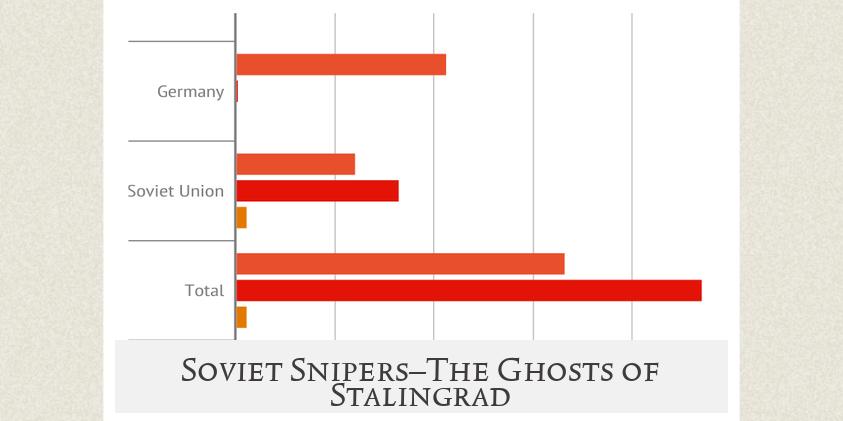
Soviet snipers became infamous terror agents for the Germans. Often not formally trained but seasoned hunters, these snipers brought rural hunting skills into brutal urban warfare. Targeting officers was their strategy—disrupting command chains and leaving groups leaderless and confused. Given that German small-unit tactics were still evolving, this tactic was devastating.
The Plight of German Soldiers—A Humanitarian Disaster
German troops faced a nightmare beyond bullets and bombs. They were undersupplied, physically abused by the harsh Soviet winter, and struck down by disease. Typhus, dysentery, diphtheria, frostbite, gangrene, and scurvy wreaked havoc inside their ranks. To add insult to injury, food was so scarce that cannibalism was reported—though attempts often failed because frozen corpses were too solid to chew.
Reports also reveal the use of methamphetamine (Pervitin), used to maintain energy despite exhaustion, and withdrawal from it contributed to further suffering. Morale plummeted to horrific lows with mass suicides reported. Many soldiers’ frostbitten fingers were too swollen to hold their rifles properly, forcing them to improvise gloves from the skins of rats and stray dogs just to keep their hands warm.
Riots even erupted among starving soldiers when rumors spread that supplies were being hoarded—rumors that were false since there simply was no food.
Civilians In the Eye of the Storm
Some civilians were evacuated, especially young children and elderly women. But many remained trapped in a combat zone turned inferno. Civilians were forced into roles like ammo runners or even direct combat support. This grim “Stalingrad Street Fighting Academy” was a cruel rite of passage as teenagers and ordinary citizens took up arms.
Take the 1077th Anti-Aircraft Regiment, for example. Comprised mainly of teenage girls fresh out of high school, they turned their flak guns against German soldiers. Many met violent deaths, some from friendly fire, others from brutal fighting. German bombings indiscriminately targeted military and civilian areas alike—reports from Russian snipers mention children killed amidst the chaos.
“What About the Prisoners?”
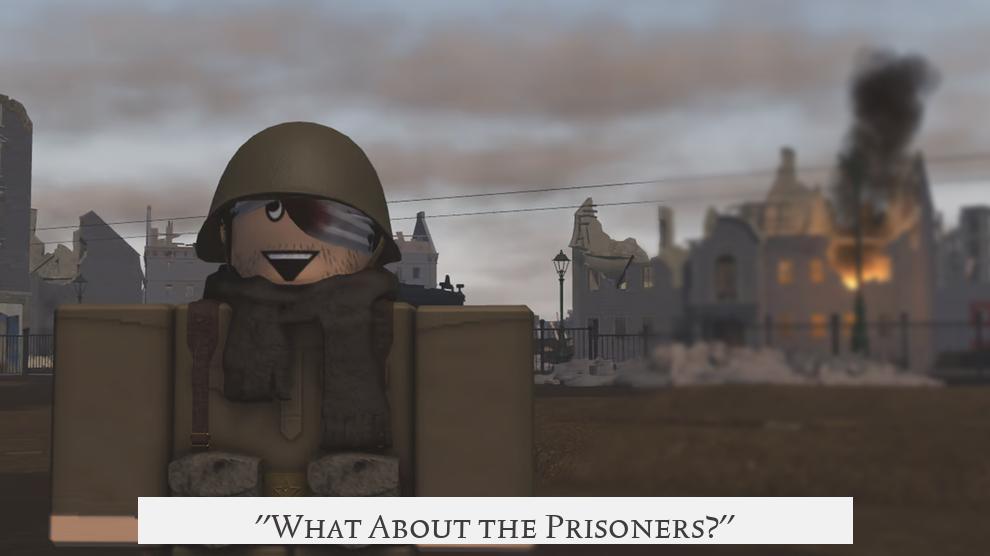
When the battle ended, the Soviets took nearly 100,000 German soldiers prisoner. But conditions for POWs were nightmarish. Most died of starvation, exposure, and untreated injuries. The Soviet troops and civilians were struggling to survive themselves, with supply lines destroyed and winter conditions unforgiving. Only about 6,000 POWs would survive captivity.
The Brutality Summed Up
Stalingrad was brutal in multiple senses—it combined the horrors of urban warfare, icy siege conditions, and mechanized combat into a relentless hell. Starvation, freezing temperatures, disease, and combat exhaustion eliminated the distinctions between soldier and civilian. There was no mercy, no refuge.
Political leaders’ decisions worsened matters. Stalin’s initial refusal to allow evacuation left many trapped, and Hitler’s orders forbade retreat, dooming countless troops. These rigid commands prolonged suffering and amplified death tolls.
So, How Brutal Was Stalingrad? Reflection and Lessons
If you need proof of the campaign’s brutality, consider this: the average daily death toll—up to 15,000—equals that of many major modern-day tragedies multiplied over months. The physical and psychological horrors were unimaginable. And yet, the battle’s outcome marked a crucial turning point in WWII’s Eastern Front.
Could modern warfare avoid such a disaster? Advances in medical evacuation, supply chain logistics, and urban combat tactics all owe lessons to this disaster. Understanding Stalingrad helps ground our appreciation of the true costs of war, far beyond strategy and victory banners.
Finally, consider this: if entire German divisions vanished with barely a handful surviving, and civilians endured decades of scars—both physical and emotional—how do we honor those sacrifices? By remembering Stalingrad’s brutal reality, we keep history honest and reinforce the value of peace.
“Stalingrad was not just a battle; it was a crucible that consumed men, cities, and hope alike.”
Modern historians still uncover bodies beneath new concrete—silent witnesses to a relentless human tragedy. So, the next time you hear the name “Stalingrad,” remember: it stands for one of the most brutal chapters in human history.
